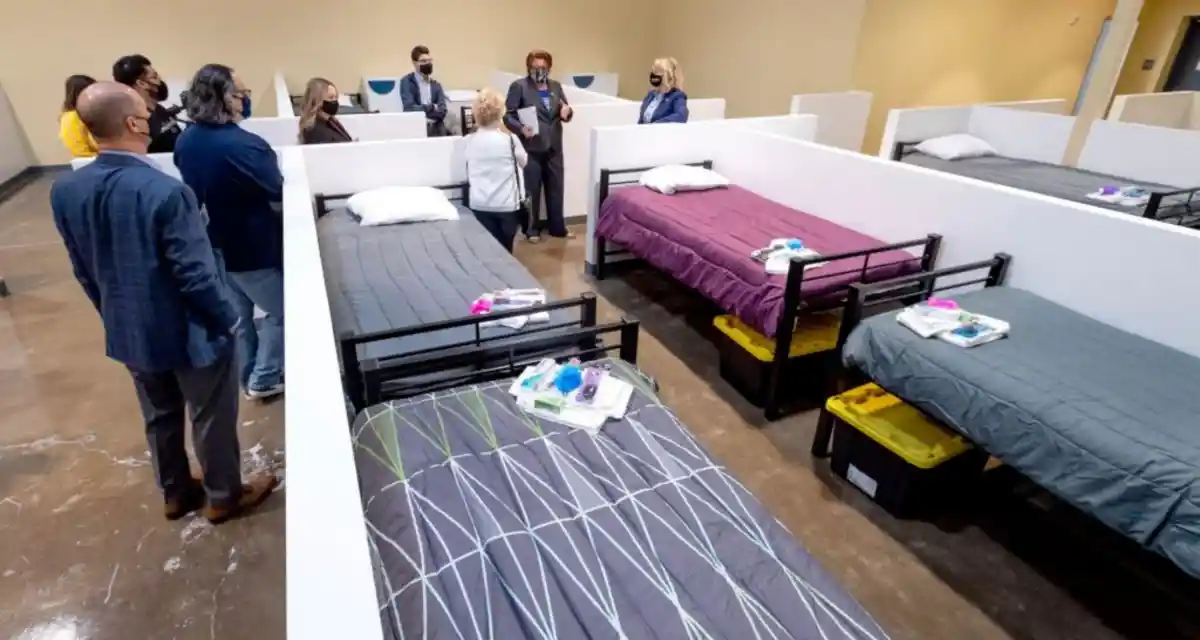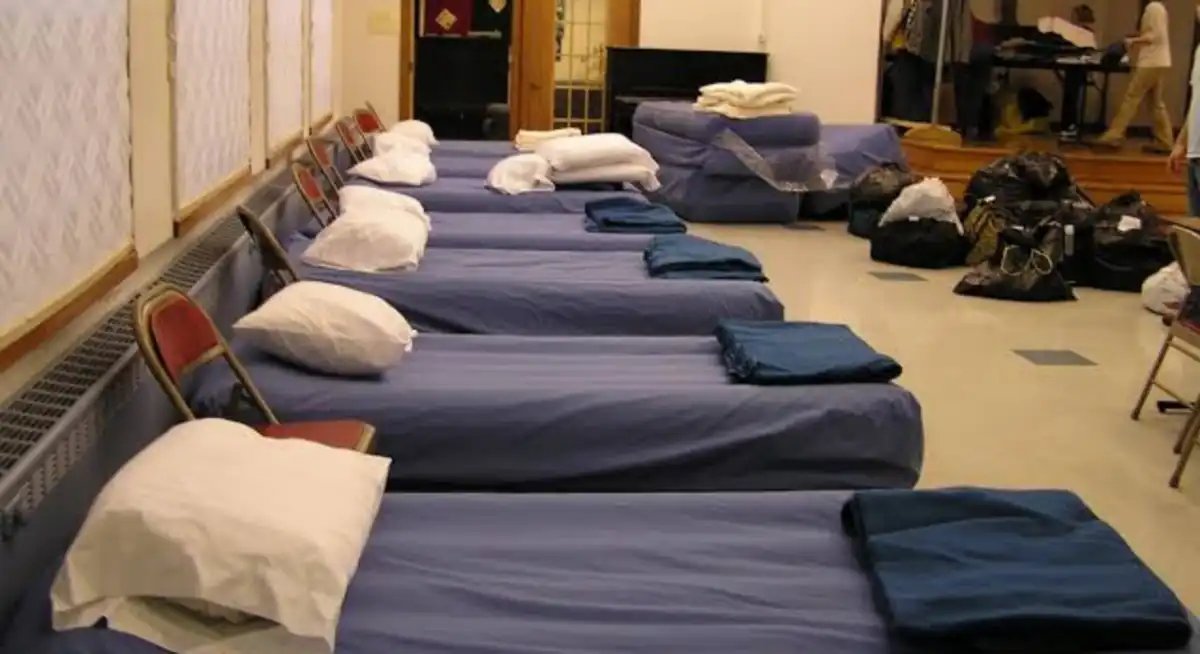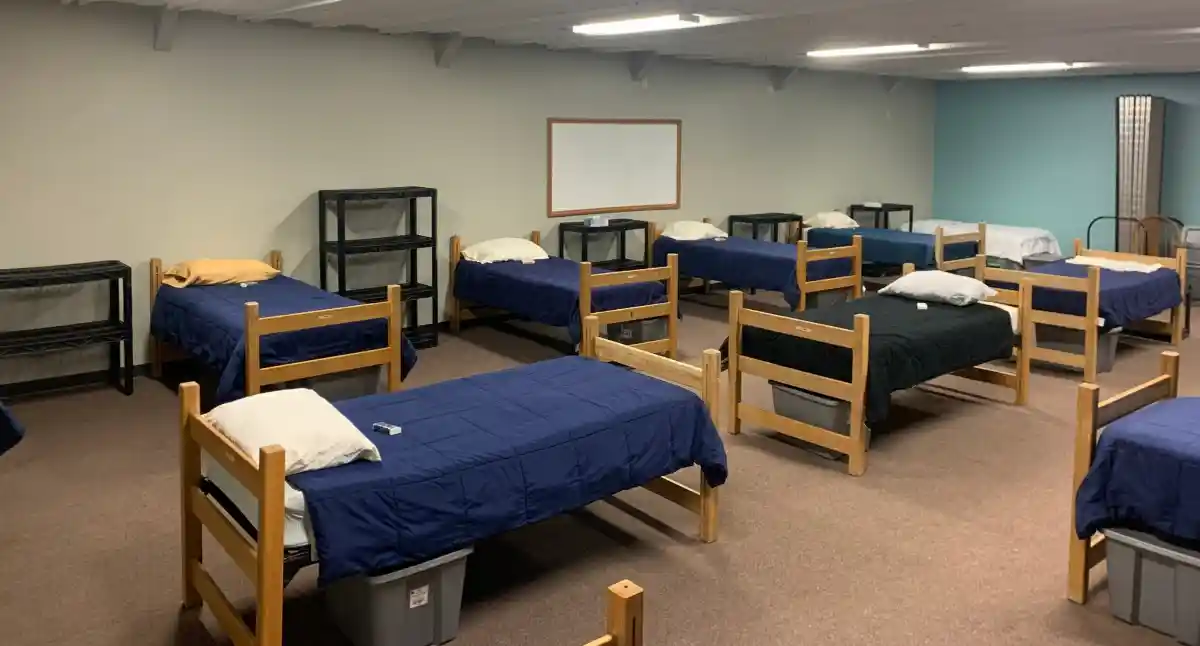It takes meticulous planning, careful analysis of data, in-depth understanding of relevant statutes, and a relentless pursuit of your mission to start a homeless shelter with government funds. That’s because the process involves various stages such as initial planning, securing funding, operational planning, and shelter management.
Generally, a homeless shelter is a short-term refuge for people without a home. Apart from sheltering, you also ensure the residents’ nutritional, health, and general well-being. The demand for such facilities is high, given that countless individuals worldwide require access to a Homeless Shelter for numerous reasons.
If you have a desire to make a difference and contribute to society by assisting those in need, establishing a non-governmental organization (NGO) dedicated to providing shelters for the homeless could be a meaningful endeavor. The government typically provides funding for these shelters, enabling you to set up a Homeless Shelter in your community or another area using government resources.
Statistics from the U.S. Department of Housing and Urban Development (HUD) in 2022 estimated that 582,462 people were experiencing homelessness in the United States on a single night. This number continues to underscore the pressing need for more comprehensive, effective, and accessible homeless services, including shelters.
How to Start a Homeless Shelter with Government Funds

Unlike a profitable business, starting a homeless shelter has a different approach, since you are in with the mindset of helping people. Not to tell too long a story, below are the steps to start a homeless shelter with government funds:
1. Understanding Various Homeless Shelter Models
First of all, familiarize yourself with the various homeless shelter types. Here are some common categories:
- Shelters for runaway youth
- Shelters catering to child abuse victims
- Shelters for families who cannot afford rental housing
- Shelters dedicated to destitute women
- Domestic violence victim shelters
- Shelters offering treatment for drug abuse or intoxication victims
- Shelters for ex-prisoners without an alternative residence
- Shelters for critically ill individuals or families
- Elderly-focused shelters
2. Run an Extensive Research and Analysis
Have you decided to embark on the journey of building a homeless shelter? You need to run comprehensive research on your target area or city/state’s demographic and socio-economic profile.
Also, get to understand the legal prerequisites for creating and managing a Shelter. You need to adhere to health standards as mandated by each state for setting up or running a Homeless Shelter. Certain stipulations may also relate to the specific population you plan to serve at your shelter. So, you need to be aware before finalizing the project’s details to obtain a government grant.
3. Define Your Mission
Make sure to articulate a clear mission and vision for your homeless shelter. Determine the demographic you aim to serve, such as families, single adults, or youth.
Also, outline the breadth of services you intend to provide, which might encompass emergency shelter, transitional housing, supportive services, and specialized programs tailored to your target population’s unique needs.
Given the diversity of Homeless Shelter types serving different population groups, you’ll need to decide on a specific focus or niche. Gauge the demand for a specific demographic’s Shelter and align your mission accordingly.
Your initial planning should begin with an extensive needs assessment. Analyze the specific needs of your community, the existing resources, and gaps in services will guide your planning process.
The National Alliance to End Homelessness suggests that about 35% of the homeless population are people who are unsheltered, living in their cars, parks, or other places not meant for habitation. Understanding your local data is crucial for designing a facility and program that meets the unique needs of your community.
Another integral part of the planning process is building partnerships. Collaborate with local businesses, community organizations, and government entities. These alliances can offer financial assistance, volunteering efforts, in-kind donations, and resources such as food and healthcare services.
4. Choosing the Right Location
Once you’ve identified your niche, the next step is to find a suitable location for your Homeless Shelter. The selected site should be accessible and comfortable for the residents, and adequately equipped for storage of their belongings.
Your chosen location must have adequate ventilation to promote healthy living conditions. Moreover, considerations such as parking availability, security, and traffic conditions should factor into your decision-making process.
5. Get the Necessary Certifications
To establish your homeless shelter, you must first create a legal entity, such as an LLC, C Corp, or S Corp. This structure will allow your organization to have its own bank account and property. If you opt for non-profit status, you will need a board of directors.
Select an appropriate name for your Homeless Shelter, register it, and secure necessary insurance policies, including General Liability Insurance, Workers’ Compensation Insurance, Commercial Property Insurance, and Umbrella Insurance, among others.
Several legal documents are required to run a Homeless Shelter, including:
- Certificate of Incorporation
- Insurance Policy
- Tax Exemption document
- DBA Business Name
- Federal EIN
- State EIN
Obtain professional certifications for operating a Homeless Shelter, including:
- Certified Independent Practice Social Workers
- Certified Social Work Case Managers
- Certified Advanced Practice Social Workers
- Commission for Case Manager Certification
When recruiting staff, consider these qualifications as they will enhance your organization’s credibility and effectiveness.
6. Start a Homeless Shelter with Government Funds
Government funding is a viable source of capital for starting a homeless shelter. Federal agencies like the HUD, Federal Emergency Management Agency (FEMA), and Department of Health and Human Services (HHS) offer grants to nonprofits aiding the homeless population.
The most prominent grant from the HUD is the Continuum of Care (CoC) Program. This program was designed to promote a community-wide commitment to ending homelessness. HUD awarded nearly $2.2 billion to local shelters in 2020. The grants are competitive and are given to projects that can demonstrate results.
Other federal grants include the Emergency Food and Shelter National Board Program (EFSP) from FEMA, which distributed over $130 million, and the HHS’s Projects for Assistance in Transition from Homelessness (PATH), which disbursed more than $65 million. These funding streams can be instrumental in starting a shelter.
7. Develop a Business Plan for Your Homeless Shelter
Even though a Homeless Shelter operates on a non-profit basis, comprehensive financial planning and forecasting are still necessary. A modest shelter might cost around $5000, while a medium-scale facility could amount to roughly $200,000, and a large-scale operation may reach a million dollars.
Some necessary items can be procured through donations from churches or other philanthropic organizations.
In addition to legal and financial details, your business plan should outline the project’s mission and vision, its societal benefits, and the Board of Directors’ role. Emphasize the need for government grants as personal donations may come with strings attached and may not be consistently available. Since a Homeless Shelter is a welfare project, it requires government support. Your commitment to complying with government grant conditions should also be clearly stated.
8. Plan the Operations
Once you’ve secured the necessary funding, you’ll need to use it to purchase or lease a facility, hire staff, and set up the operational systems necessary for a successful shelter. According to a 2015 report from the National Alliance to End Homelessness, the annual operation cost of a homeless shelter can range from $1.2 million to $5 million, depending on the size and services provided.
A well-structured shelter requires administrative personnel, case managers, social workers, maintenance staff, and more. Keep in mind that salaries for a staff of 10-20 could cost from $300,000 to $700,000 per year.
Housing quality and safety are also crucial when you start a homeless shelter with government funds, with safety measures including smoke detectors, emergency exits, first-aid facilities, and adherence to the Americans with Disabilities Act (ADA) requirements. The cost for these will depend on the size of the facility and local building codes.
9. Assemble a Skilled and Supportive Team
Building a committed and competent team is crucial for a successful homeless shelter. This team should include compassionate and capable individuals, such as case managers, social workers, counselors, security staff, administrative personnel, and volunteers.
Develop comprehensive job descriptions, carry out background checks, and ensure appropriate training and ongoing professional development to provide top-tier care and support for shelter residents.
Establish collaborations with local government agencies, nonprofits, healthcare providers, faith-based organizations, and community stakeholders. Such partnerships can grant access to additional resources, expertise, and support services.
10. Secure Funding and Necessary Resources
You need to itemize specific requirements and their associated costs. Document the financial estimations for the income and expenses involved in running your homeless shelter. Incorporate your market research report, specifying the number of homeless individuals in your area.
Identify potential funding sources for your shelter, such as government grants, foundations, corporate sponsorships, and individual donations.
Devise a fundraising strategy encompassing grant applications, fundraising events, online crowdfunding campaigns, and collaborations with local businesses and community organizations. Also, solicit in-kind donations of essentials like bedding, clothing, toiletries, and food.
What You Should Know

1. Policies and Procedures Development
Running a homeless shelter effectively requires clear, consistent policies and procedures. This will guide staff and volunteers in their interactions with shelter residents, ensuring a safe, respectful environment for everyone involved.
Policies should cover all aspects of shelter operations, from intake procedures to meal times, bed assignments, and client behavior expectations. According to the National Health Care for the Homeless Council, shelter policies should also address access to medical and mental health services, ensuring residents receive the care they need.
2. Licensing and Legal Requirements
Shelters must comply with federal, state, and local laws. As such, it’s crucial to understand the legal requirements for operating a shelter in your area. This can include zoning laws, building safety codes, and licensing requirements.
An essential step is to establish your organization as a nonprofit. The National Council of Nonprofits states that becoming a nonprofit typically involves incorporating at the state level and then applying for tax-exempt status from the Internal Revenue Service.
3. Staff and Volunteer Training
Training for staff and volunteers is vital to ensure they’re equipped to handle the unique challenges of working in a shelter environment. The Substance Abuse and Mental Health Services Administration recommends training on topics like trauma-informed care, crisis intervention, and cultural competency.
4. Community Outreach and Public Relations
Community support is crucial for a homeless shelter’s success. Regular outreach activities can keep the community engaged and supportive of the shelter. Additionally, shelters should also establish good relationships with local media to help share success stories and publicize needs or events.
5. Establishing Supportive Services
Homeless shelters aren’t just about providing a place to sleep. They’re often the first step to helping individuals break the cycle of homelessness. You need to establish supportive services like case management, job training, and mental health services.
HUD’s Emergency Solutions Grants (ESG) program, which in 2020 provided over $290 million in funding, can be used to provide these essential supportive services, assisting individuals and families in quickly regaining stability in permanent housing.
6. Performance Evaluation and Continuous Improvement
Once the shelter is up and running, it’s essential to monitor performance and look for ways to improve continually. Use metrics like the number of people served, length of stay, and the number of people who move into permanent housing to evaluate the effectiveness of the shelter.
Furthermore, regular surveys of residents can provide valuable insights into what is working well and what could be improved. These evaluations are critical for demonstrating the shelter’s effectiveness to current and potential funders.
How to Obtain Government Grants?
Various government departments, such as the Department of Housing and Urban Development (HUD), Department of Human/Social Services (DHS), and Department of Health and Human Resources (HHS), offer grants. Each state lists its funding programs on the DHS website.
Several municipalities also provide grants to start a homeless shelter with government funds. Some HUD funds are distributed through state or municipal authorities.
The HUD, for instance, provides the Emergency Shelter Grants Program. Detailed information about eligibility criteria, beneficiaries, eligible activities, and other essential elements can be found on their website.
HHS offers a multitude of grant programs:
- Supportive Housing Grants
- Health Care Support for the Homeless Grants
Transition from Homelessness Grants - Runaway and Homeless Youth Grants
- Homeless Assistance Grants
- Living Program for Older Homeless Youth Grants
- Access to Recovery
- Temporary Support for Needy Families
- Child Support Program Grants
- Street Outreach Program
- Maternal and Child Health Grants, and many more
The Substance Abuse and Mental Health Services Administration (SAMHSA), a division of the U.S. Department of Health and Human Services, provides grants and resources related to mental and substance use disorders and homelessness. Their grant programs include:
- Homeless Assistance Grants
- Treatment for Homeless Individuals
When you start a homeless shelter with government funds, it is a welfare initiative. Therefore, a genuine altruistic intent is vital for launching such a project.
Government grants are an ideal funding source for a homeless shelter. Thoroughly researching these grants can pave the way for your project. Remember, your determination will guide you. The stronger your resolve, the more successful your endeavor.
How Much Money Does the Government Give to Homeless Shelters?

The allocation can vary significantly based on the scope of the program, the specific needs of the communities they serve, and the sources of the funding.
Federal agencies such as the Department of Housing and Urban Development (HUD) offer significant funding to combat homelessness. For instance, HUD’s Continuum of Care (CoC) Program is designed to promote community-wide commitment to ending homelessness and provides funding for efforts by nonprofit providers, states, and local governments to quickly rehouse homeless individuals and families. The actual grant amounts can vary greatly from year to year and from one grantee to another.
To help individuals and families experiencing homelessness move into permanent housing, the U.S. Department of Housing and Urban Development (HUD) announced $2.8 billion in Continuum of Care (CoC) Competition Awards for thousands of local homeless service and housing programs across the United States.
Also, it’s worth noting that funding for homeless services isn’t solely federal; state and local governments, as well as private donations, also make substantial contributions.
Frequently Asked Questions
What resources do homeless people need most?
Essential items for the homeless include:
- Personal hygiene items
- Socks
- Compassion
- Pet food
- Food
- Raingear
- Gift cards and transportation passes
How do homeless shelters make money?
Homeless shelters rely on funding from various sources, including private donors, fundraising events, corporate sponsors, and government support.
How much does it cost to own a homeless shelter?
The cost of opening a homeless shelter varies depending on the size and capacity desired. Estimated costs are as follows:
- Mini/micro-level shelter: $500-$2,000
- Mid-level shelter: $50,000
- Large-scale shelter: $100,000+
Embarking on the journey to establish a homeless shelter isn’t a task suited for everyone; it necessitates bravery, resolve, determination, diligence, and above all, compassion. If you’re contemplating the idea of creating a shelter, we strongly encourage you to hold steadfast to your vision, no matter the obstacles. Our world is in dire need of more people who consider the welfare of those without a roof over their heads.
Read also: FedEx Franchise: How to Start, Cost and Opportunities





